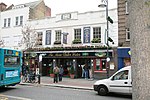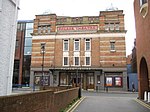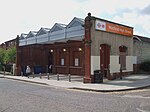St Mary's Church, Watford
13th-century church buildings in England16th-century Church of England church buildingsBuildings and structures in WatfordChurch of England church buildings in HertfordshireChurches with a Hertfordshire spike ... and 4 more
English Gothic architecture in HertfordshireFlint buildingsGrade I listed churches in HertfordshireHistory of Watford

St Mary's Watford is a Church of England church in Watford, Hertfordshire, in England. It is an active church situated in the town centre on Watford High Street, approximately 25 kilometres (16 mi) outside London. St Mary's is the parish church of Watford and is part of the Anglican Diocese of St Albans. Thought to be at least 800 years old, the church contains burials of a number of local nobility and some noteworthy monumental sculpture of the Elizabethan and Jacobean eras.
Excerpt from the Wikipedia article St Mary's Church, Watford (License: CC BY-SA 3.0, Authors, Images).St Mary's Church, Watford
Church Street,
Geographical coordinates (GPS) Address External links Nearby Places Show on map
Geographical coordinates (GPS)
| Latitude | Longitude |
|---|---|
| N 51.654563 ° | E -0.395923 ° |
Address
St Mary's
Church Street
WD18 0EQ
England, United Kingdom
Open on Google Maps








